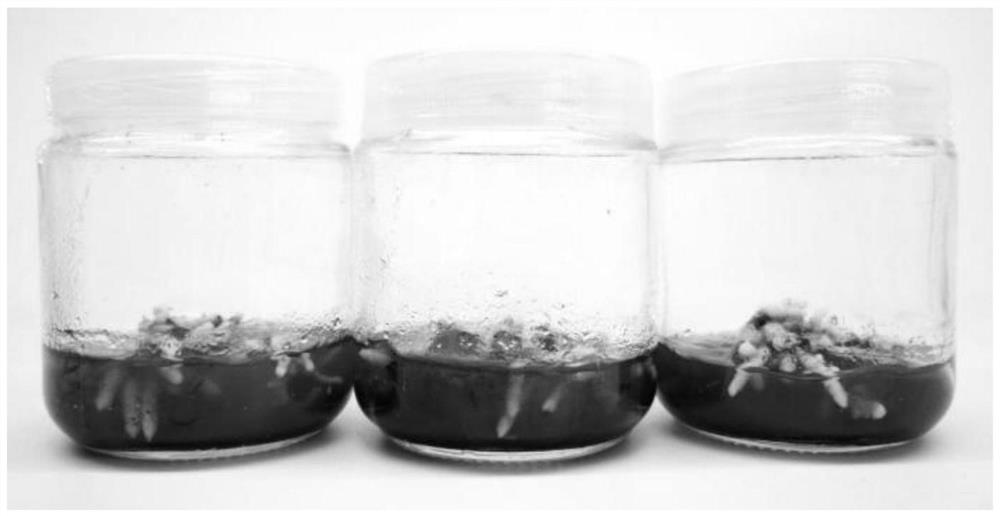A kind of rapid propagation and in vitro preservation method of saprophytic orchid
A technology of in vitro preservation and orchids, which is applied in the direction of plant preservation, botanical equipment and methods, gardening methods, etc., can solve the problems that the artificial cultivation of saprophytic orchids has not been successful, and achieve the effect of prolonging the in vitro preservation period
- Summary
- Abstract
- Description
- Claims
- Application Information
AI Technical Summary
Problems solved by technology
Method used
Image
Examples
Embodiment 1
[0028] 1. Obtaining of explants
[0029] The vigorous flowering plants of Cymbidium macrorhizon were selected in the wild for artificial cross-pollination. The flowering period of the daikon orchid in Kunming is around mid-July. Flowers that have fully unfolded for 1 to 2 days are selected for pollination. Use a sterilized bamboo toothpick to pick pollen grains and stick them on the stigma of another flower, and then mark them. About 180 days after pollination, the fruit pods of the orchid daikon turned light yellow-green but did not crack, and contained a large number of fully developed seeds. The fruit pods at this period were used as explants for subsequent experiments.
[0030] 2. Disinfection and germination of explants
[0031] Scrub the surface of uncracked geranium fruit pods with clean gauze, move them into the ultra-clean workbench, sterilize with 75% alcohol (volume fraction) for 1 minute, and then use 0.2% (mass fraction) HgCl 2 Soak the solution for 10 minutes, ...
PUM
 Login to View More
Login to View More Abstract
Description
Claims
Application Information
 Login to View More
Login to View More - R&D
- Intellectual Property
- Life Sciences
- Materials
- Tech Scout
- Unparalleled Data Quality
- Higher Quality Content
- 60% Fewer Hallucinations
Browse by: Latest US Patents, China's latest patents, Technical Efficacy Thesaurus, Application Domain, Technology Topic, Popular Technical Reports.
© 2025 PatSnap. All rights reserved.Legal|Privacy policy|Modern Slavery Act Transparency Statement|Sitemap|About US| Contact US: help@patsnap.com


